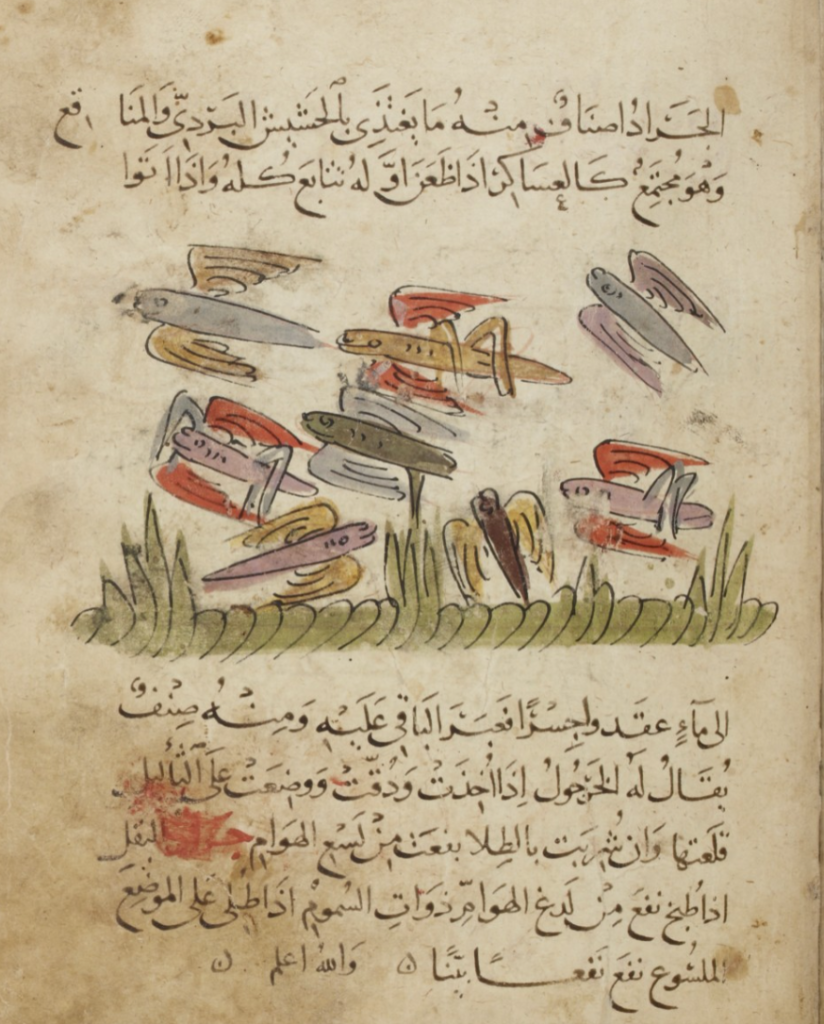The use of this insect (Schistocerca gregaria) as food goes back a long time, even if it was not always viewed favourably. The oldest references to eating locusts come from ancient Mesoptamia, where a key component of the diet was a garum-like brine in which either locusts or fish were fermented. This sauce was known as shiqqu and used as a condiment, usually paired with vinegar, and without them no meal was considered complete. Locust shiqqu also had medicinal purposes, for instance to alleviate heartburn, and would even be drunk mixed with pomegranate juice.
In the Bible (Book of Leviticus), locusts and other members of the same family (Acrididae) like crickets and grasshoppers are mentioned as food permitted by God, whereas John the Baptist is said to have survived on locusts and wild honey in the desert.
In ancient Greece, the eating of locusts was seen as barbaric, and the Greek geographer Strabo (d. 24 CE), for instance, used Akridophagoi , ‘locust-eaters’ (akris, ‘locust’), as a derogatory term for a tribe of northeastern Africa.
According to a famous hadith (saying of the Prophet Muhammad), locusts (جراد, jarād) are said to be a lawful food for Muslims, and the insects make a few appearances in medieval Arab cuisine. At the same time, any references probably included grasshoppers, as the Arabic word denotes both insect varieties but not, however, crickets which are known as sursur (صرصر) or judjud (جدجد).
In the oldest Abbasid cookery book (10th century), locusts appear pickled in brine, just like in ancient Mesopotamia, in a recipe for a condiment known as sihnāt (صحناة), which was usually made with small fish. The only other time locusts are used in a recipe is in a 13th-century Tuniso-Andalusian treatise, where the insects are boiled and fried, and served with murrī, cinnamon, and pepper.
The absence of locusts from other cookery books can be explained by the fact that they generally reflect a cuisine of the elite, which was devoid of insects of any kind. It is, however, likely that depending on the region and food access, locusts were not an unusual part of the diet in the countryside, particularly during infestations. According to the 12th-century geographer al-Idrīsī, the people of Marrakech were quite partial to the insects, which were sold at market in large quantities.
Locusts (/grasshoppers) were also used in medieval Islamic medicine; Ibn Sīnā, for instance, recommended them in the treatment of urinary incontinence and fevers, and claimed that their legs were useful in the removal of warts. The Nestorian physician Ibn Bakhtishu’ (d. 1058), for his part, suggested a poultice of cooked locusts to treat poisonous bites.

